Submitted by WA Contents
MAD completes the Cloudscape of Haikou with flowing form in Haikou, China
China Architecture News - Apr 28, 2021 - 12:29 9335 views
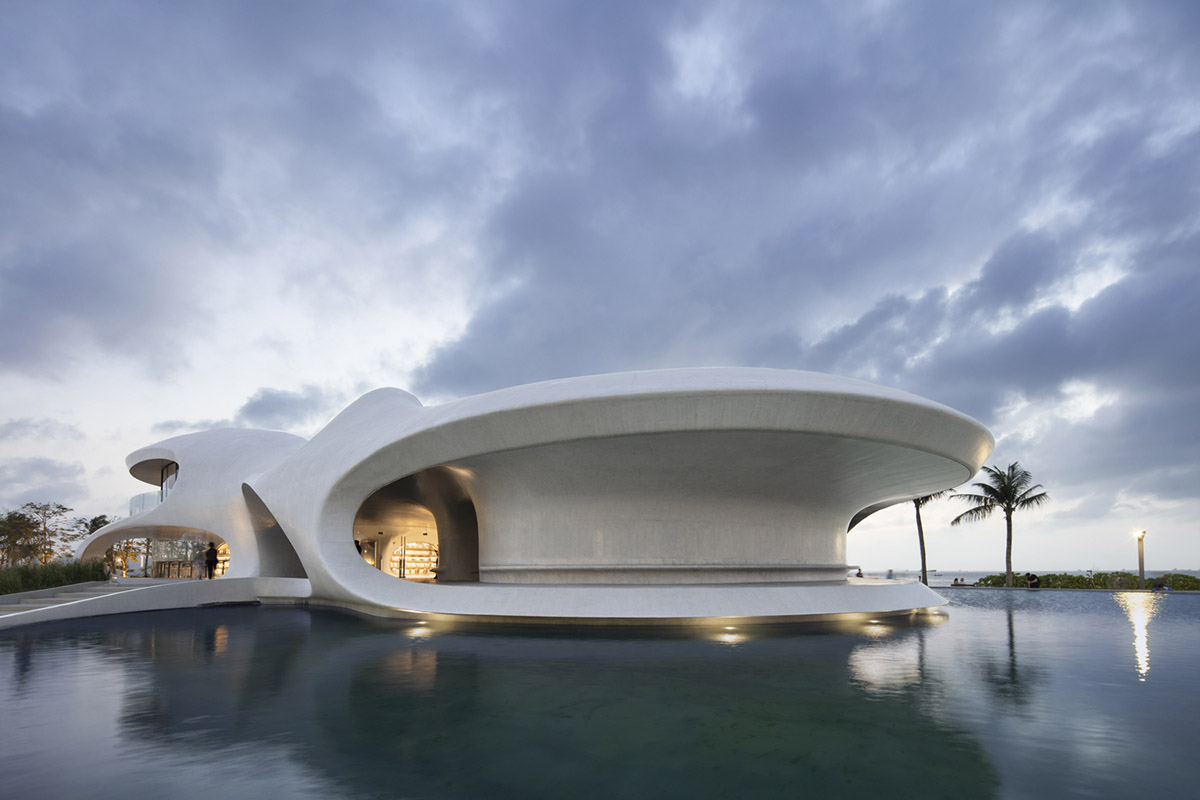
MAD Architects has completed the Cloudscape of Haikou, a library is made of a flowing form and informed by a cast of white concrete walls, in Haikou, China.
Formerly known as Wormhole Library, the project has been renamed as the Cloudscape of Haikou and completed as the first structure of 16 pavilions developed as part of the Seaside Haikou development.
Covering a total of 1,380-square-metre area, the building is situated in Century Park on the shore of Haikou Bay. The building was built by using cast in concrete, implemented by both a CNC (Computer Numerical Control) and 3D printed formwork, to ensure accuracy and create seamlessness across the curved surfaces.
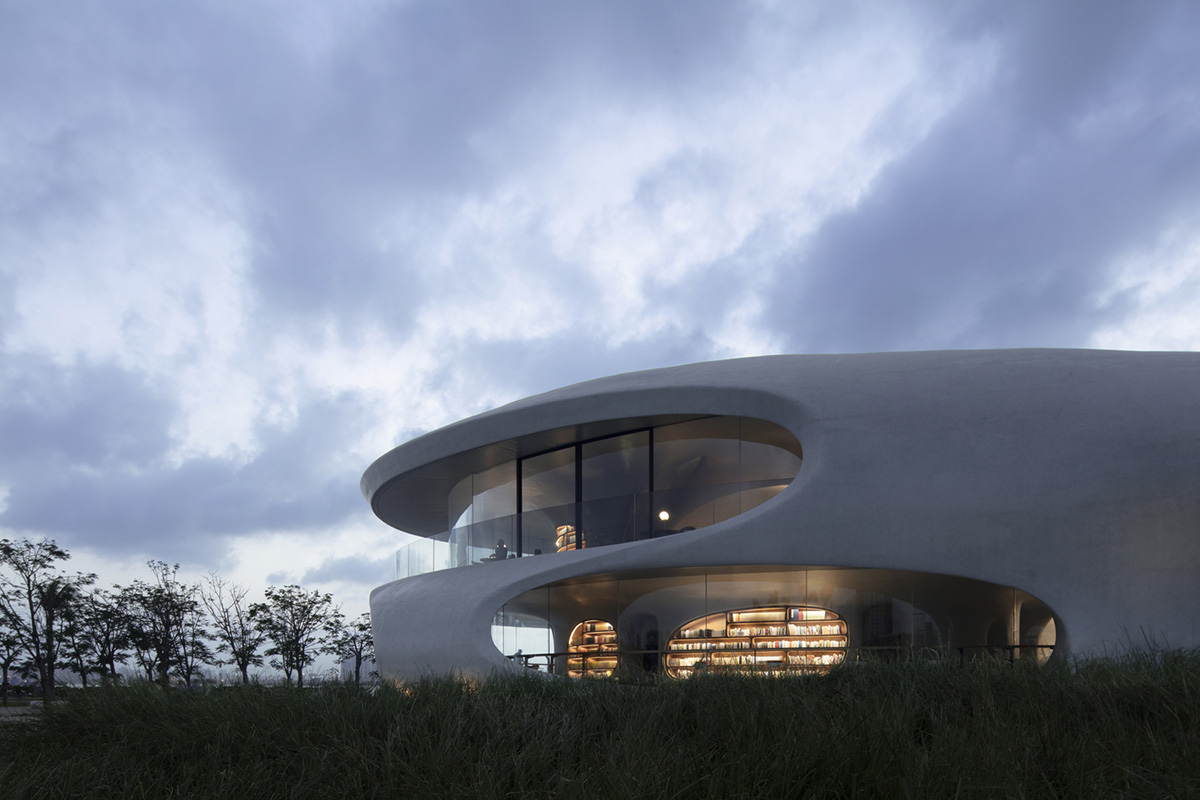
Image © Arch-Exist
The building is divided into tow zones, one is the library part and the other is used mixed-use facilities for public use. On the south side of the building, there are library and reading space containing up to 10,000 books, as well as a multi-functional audio-visual area, which is free and open for public use.
On the building’s northern side, it consists of a café, public restrooms, barrier-free restrooms, showers, a nursery room, a public rest area, and a roof garden.

Image © CreatAR Images
"Beginning a new book is often a moment that readers cherish: a venture into the surreal or unknown and gentle removal from everyday reality. The visiting experience of the Cloudscape is similar," said MAD.
"The architecture enables people to approach the building removed from our familiar urban reality, and begin a new journey transcending time and space."
Offering a cave-shaped form, the complexity of the form is deconstructed the space layer by layer, offering readers a weightless field to be inhabited by their imagination.
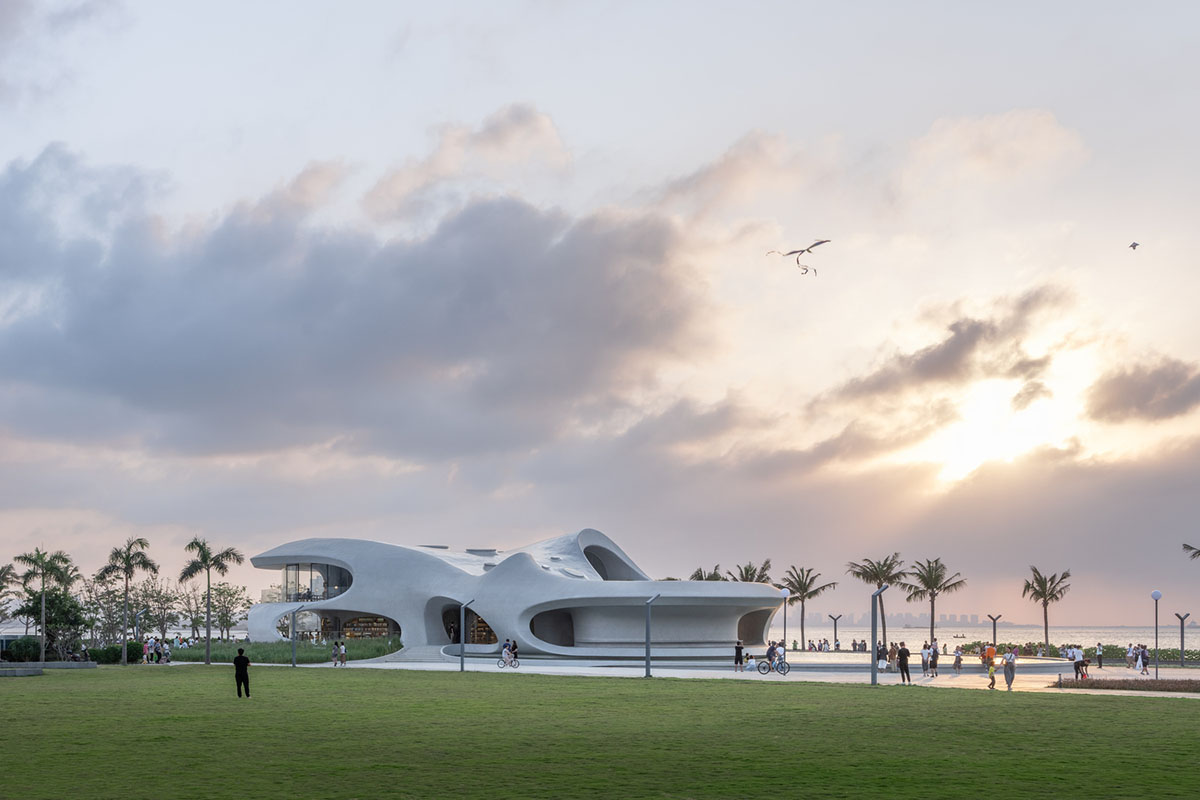
Image © CreatAR Images
Located between land and sea, the overall language of the building is highly sculptural. Thanks to the pavilion’s free and organic form, the fluidity of the geometry also create unique interior spaces, where walls, floors, and ceilings become one in unpredictable ways.
This feature blurs the boundaries between the indoors and outdoors.

Image © AOGVISION
"Spirituality is the core value of architecture. It contributes to the humanistic atmosphere of a city," said Ma Yansong, founder of MAD.
"We want this building to be an urban space that people would like to make part of their daily lives."
"Architecture, art, humanity, and nature meet here, opening up a journey of visitors’ imaginations to explore and appreciate the meaning that different beauties bring to their lives," Yansong added.
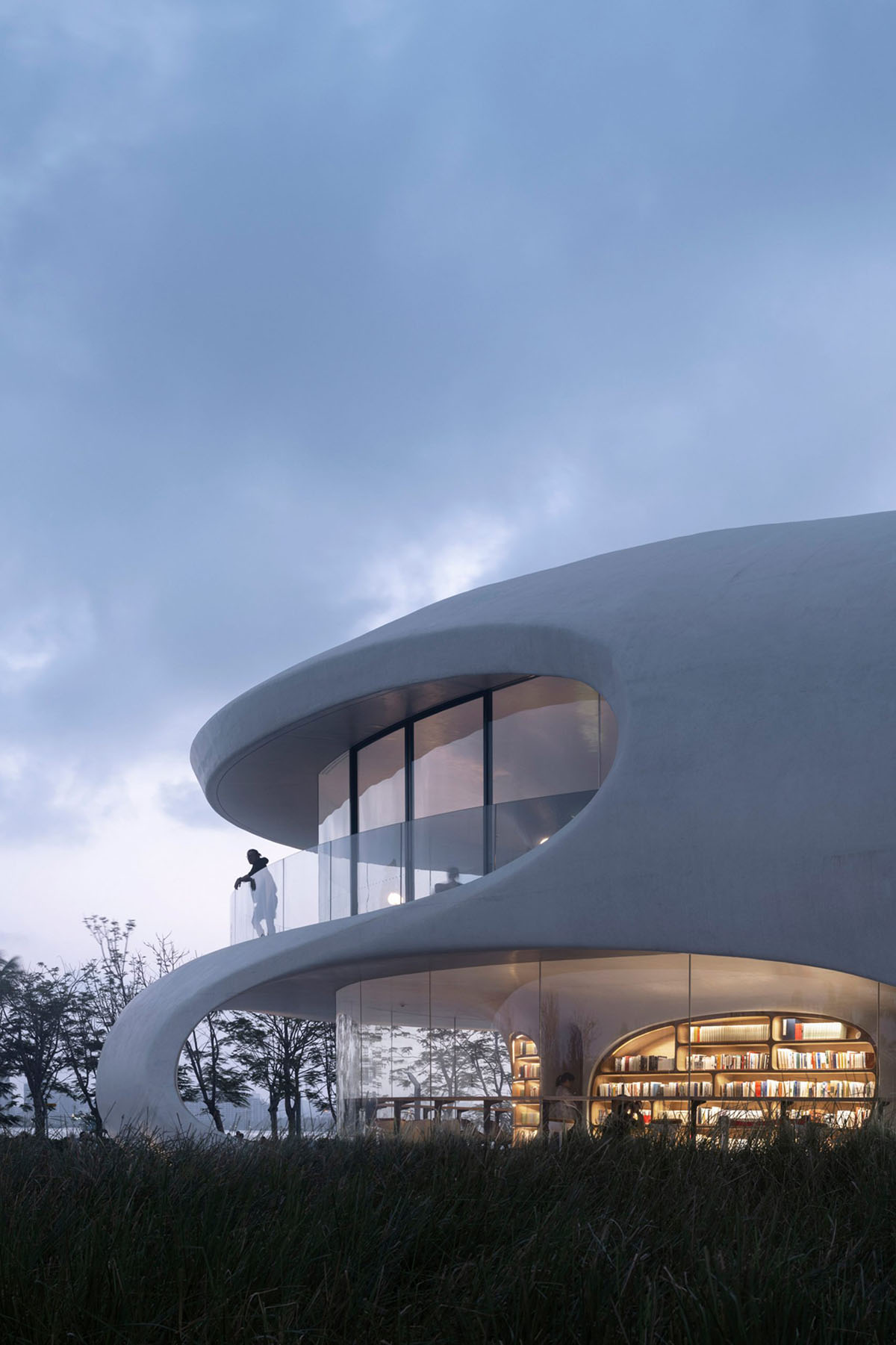
Image © Arch-Exist
The circular openings of the building represent holes forged by wildlife or seas, blurring the boundary between architecture and nature.
The holes, arranged in various sizes, take natural light into the interior and used to create a natural ventilation effect to cool the building in Haikou’s year-round warm climate.

Image © CreatAR Images
"Through the holes, people observe the sky and sea, as if looking at a familiar world through the passage of time and space. This layering of atmospheres, and collision between people and space, creates a sense of living ritual," added MAD.

Image © Arch-Exist
The structure includes a special, cascading reading area, overlooking the sea, this area also connects the first and second floors, it is not exclusively for reading, but also a venue for cultural exchange activities.
There is also a reading area for children, but this area is isolated from the main reading space, where skylights, holes, and niches stimulate the children's desire to explore.
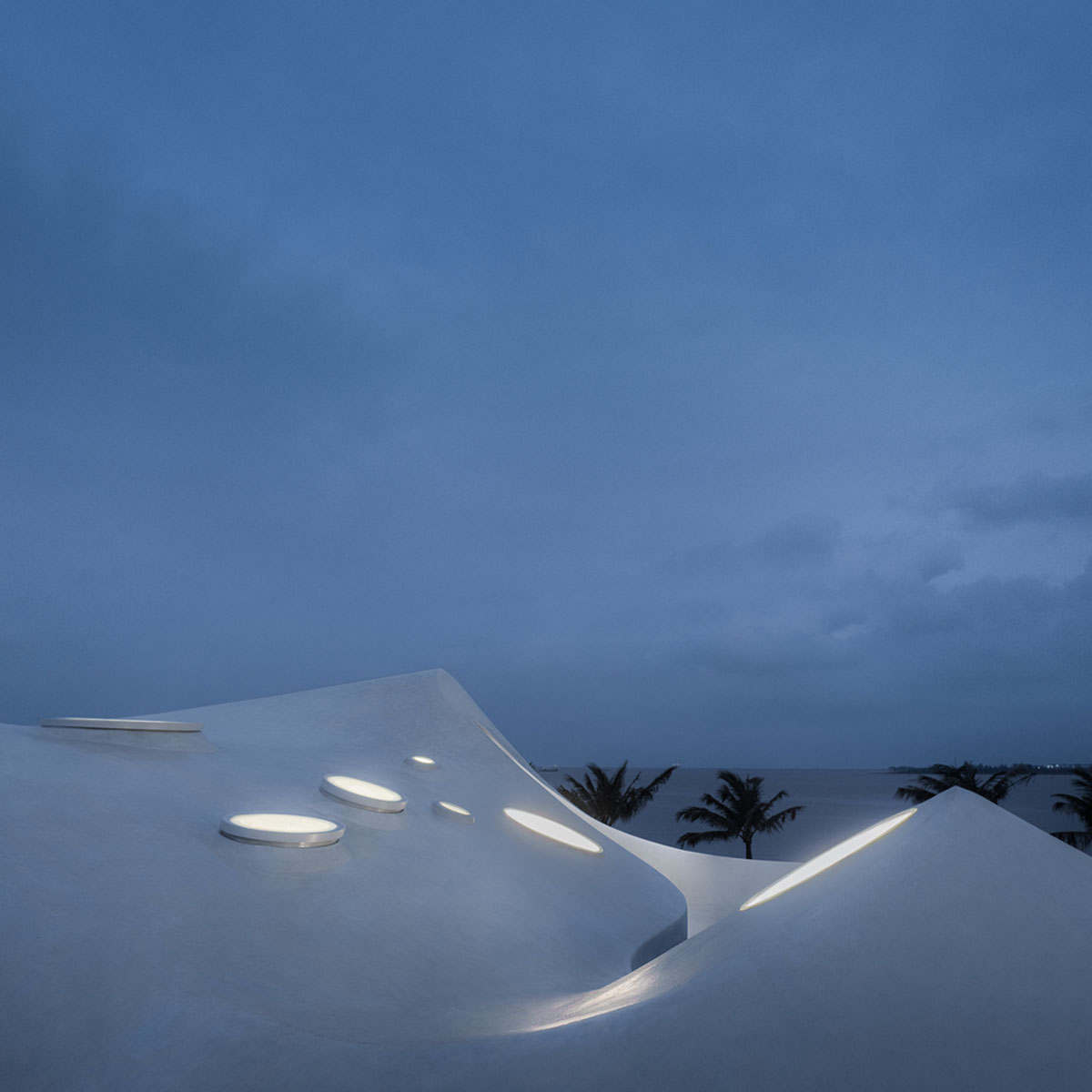
Image © CreatAR Images
Due to the nature of the structural form, the building creates several semi-outdoor spaces and platforms, which also serve as excellent spaces for people to read and gaze at the sea.
MAD also designed a cantilevered outer corridor in response to the local hot climate, to ensure comfortable temperatures, culminating in a sustainable, energy-saving structure.

Image © Arch-Exist
Through their pavilion, MAD champions an "anti-material" approach, avoiding the intentional expression of structure and construction, thus dissolving the inherent everyday perception of the material and allowing the spatial feeling itself to become the main subject.
As the studio explained, in this project, concrete is used as "a liquid material, characterized by its flowing, soft, and variable structural form."
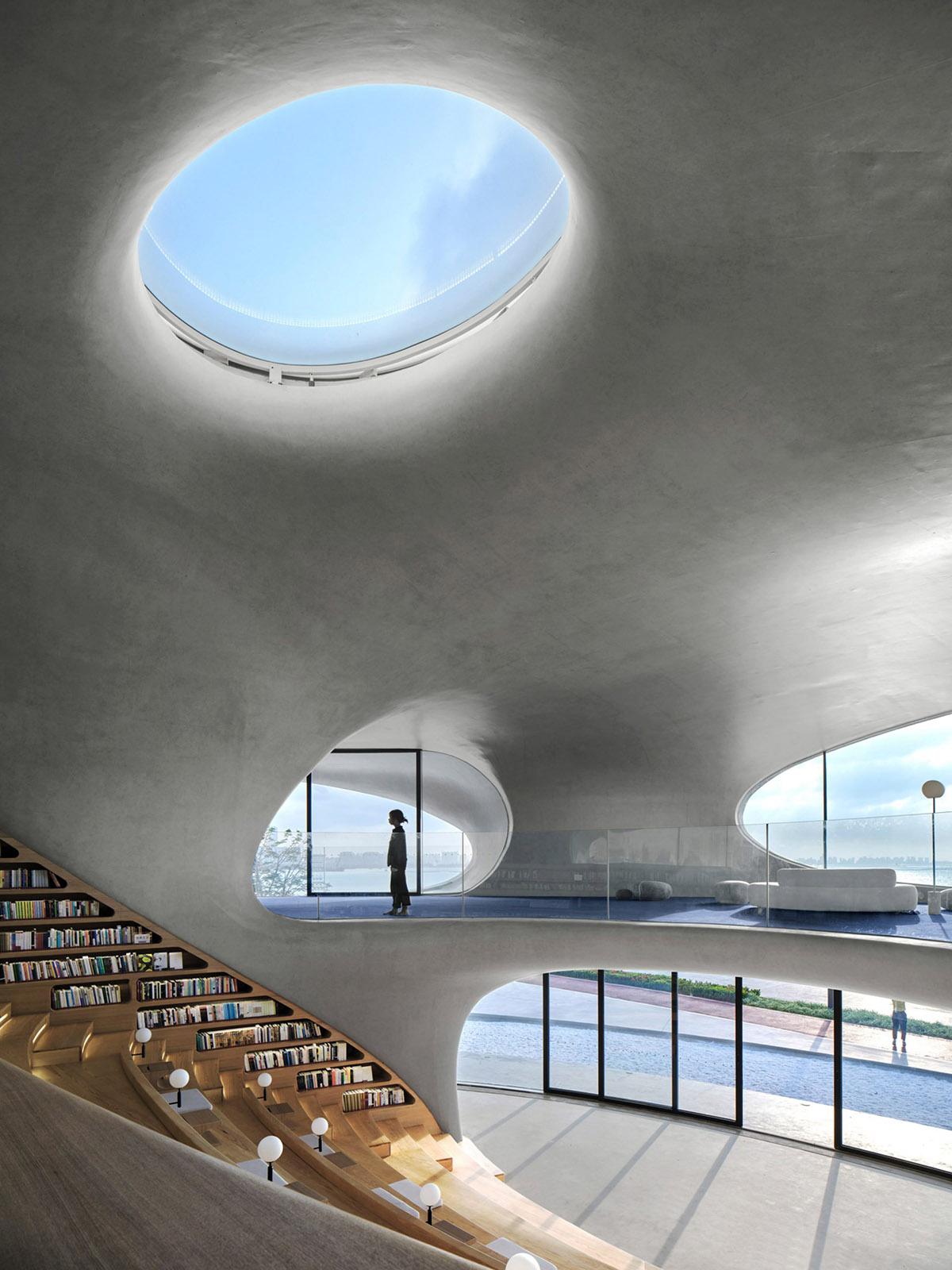
Image © Arch-Exist
When visitors enter inside, they can see that the interior and exterior of the building are cast in fair-faced concrete to create a single cohesive, flowing form.
The roof and floor of the building are made of double-layered waffle slabs to support the building’s scale and create large cantilever. As the studio stated, the design development was conducted and tested by using digital models.
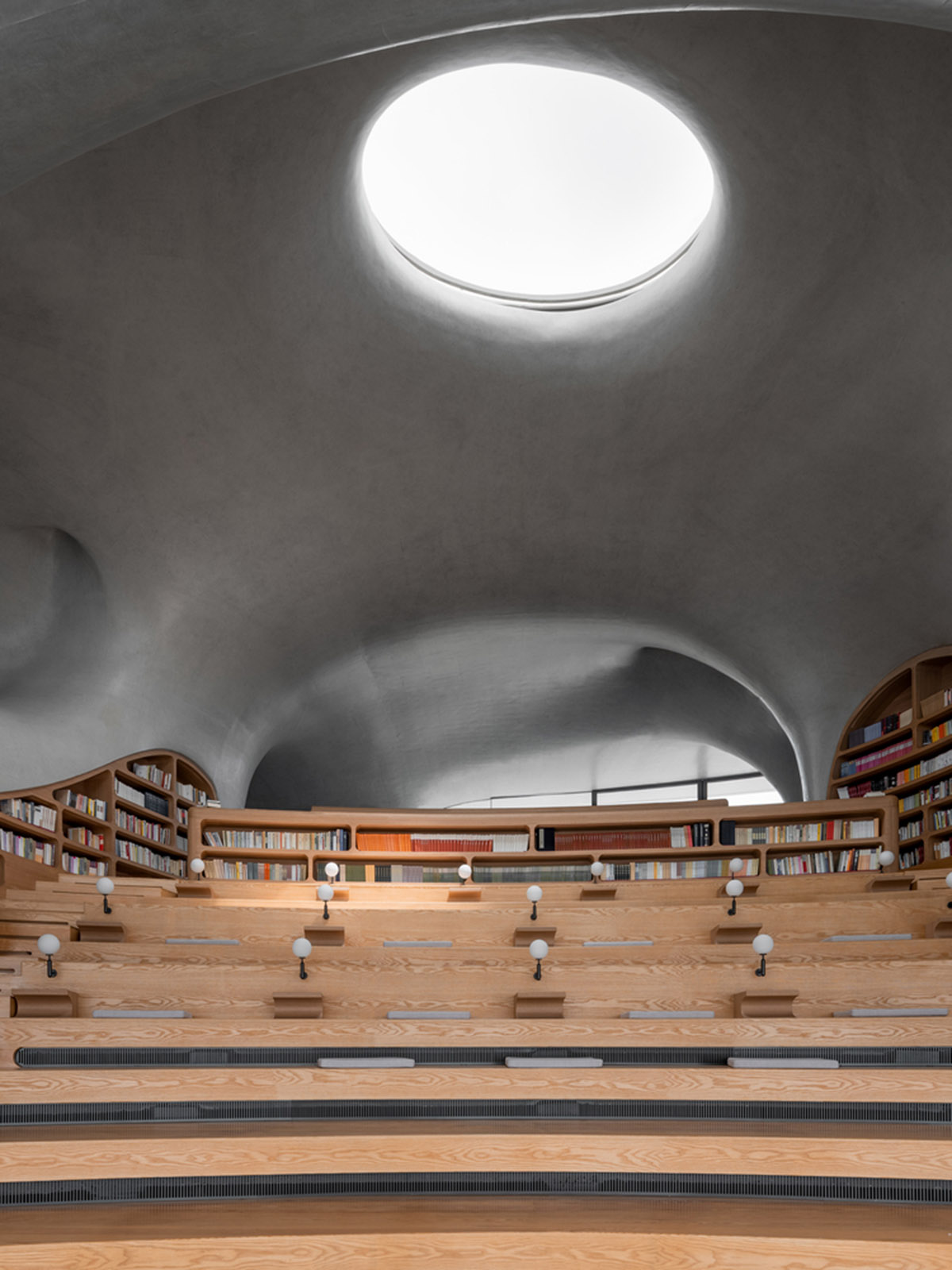
Image © CreatAR Images
"It was possible to hide all mechanical, electrical, and plumbing elements within the concrete cavity to minimize their appearance and create visual consistency," said the studio.
"The smooth, organic aura of the pavilion is only made possible by this key integration of architecture, structure, and mechanical and electrical design," the team added.
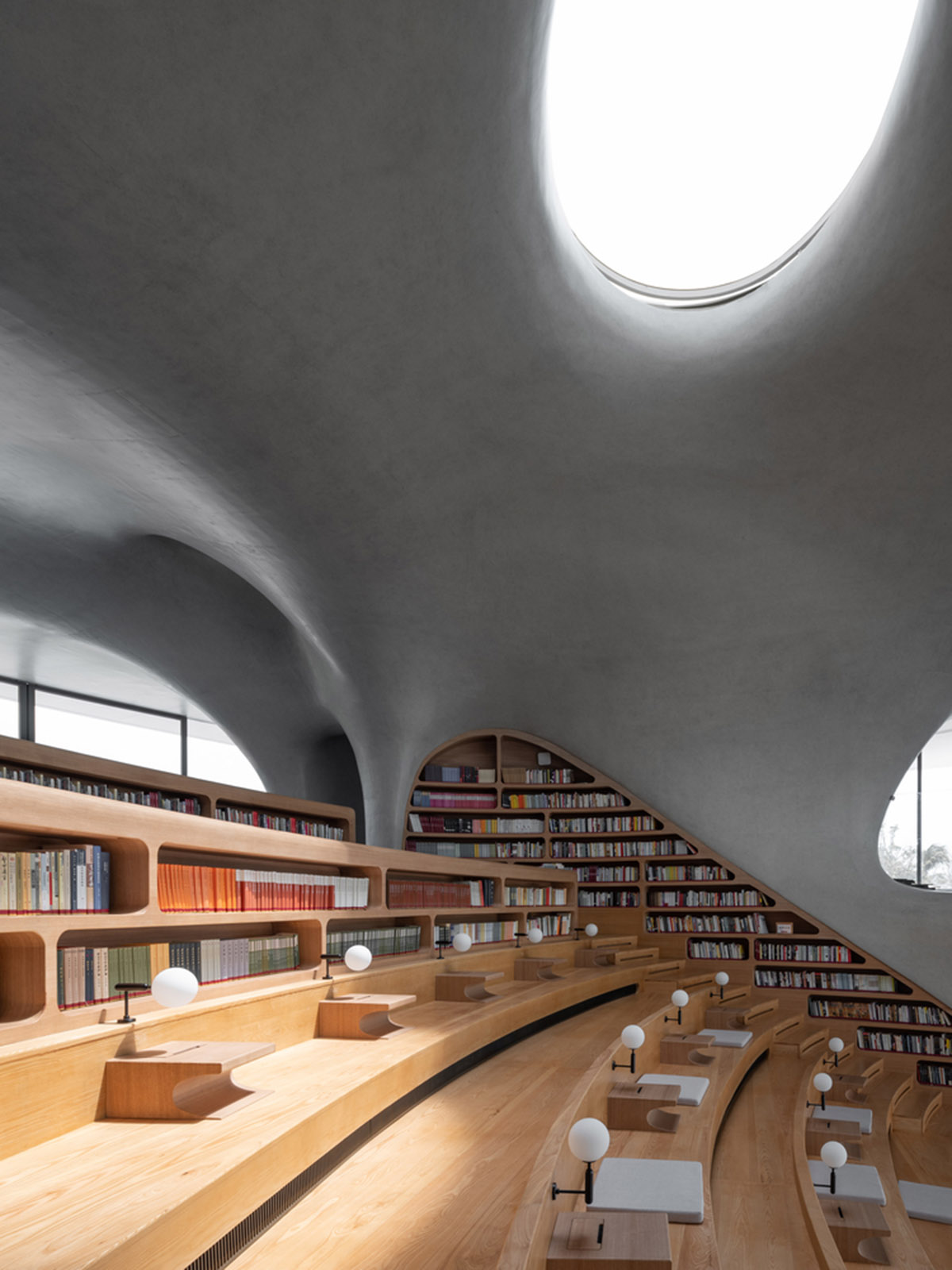
Image © CreatAR Images
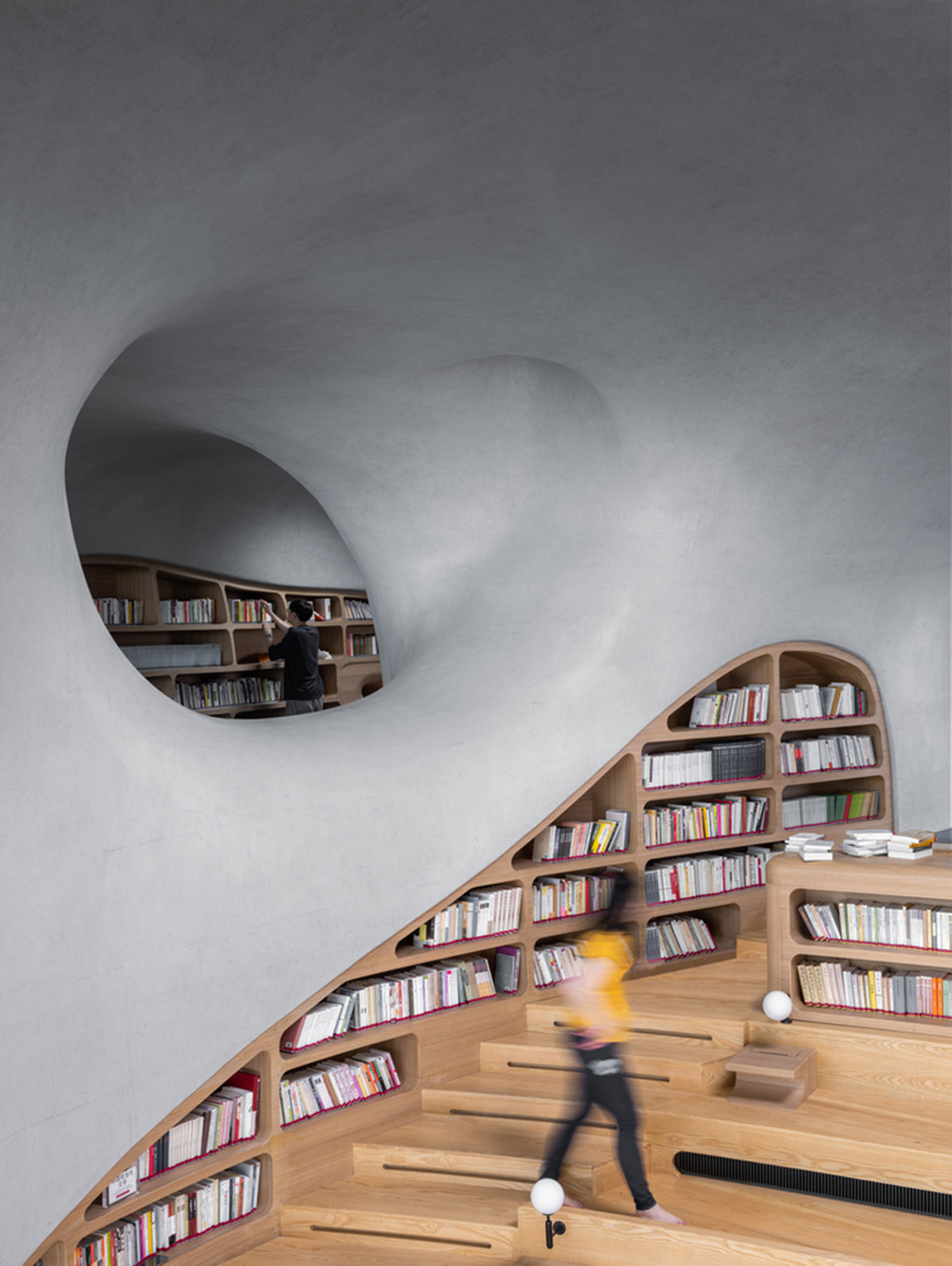
Image © CreatAR Images

Image © Arch-Exist

Image © Arch-Exist

Image © Arch-Exist
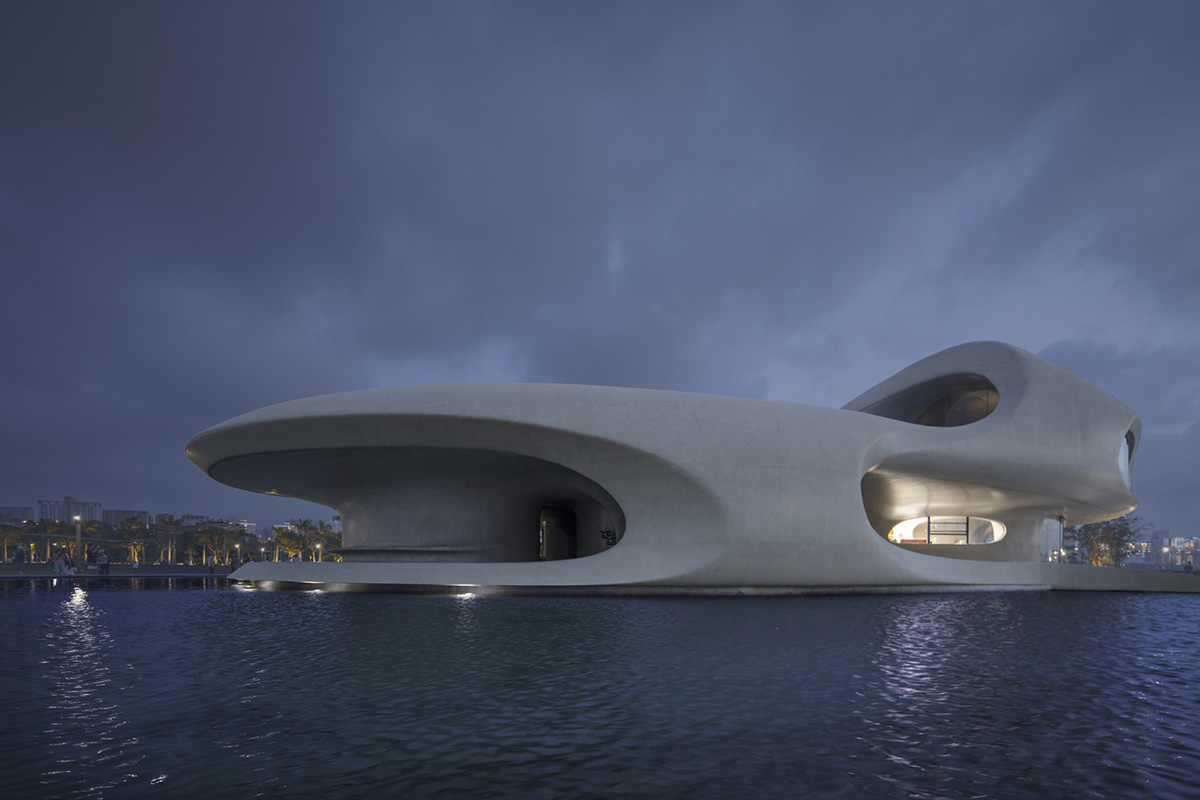
Image © Arch-Exist
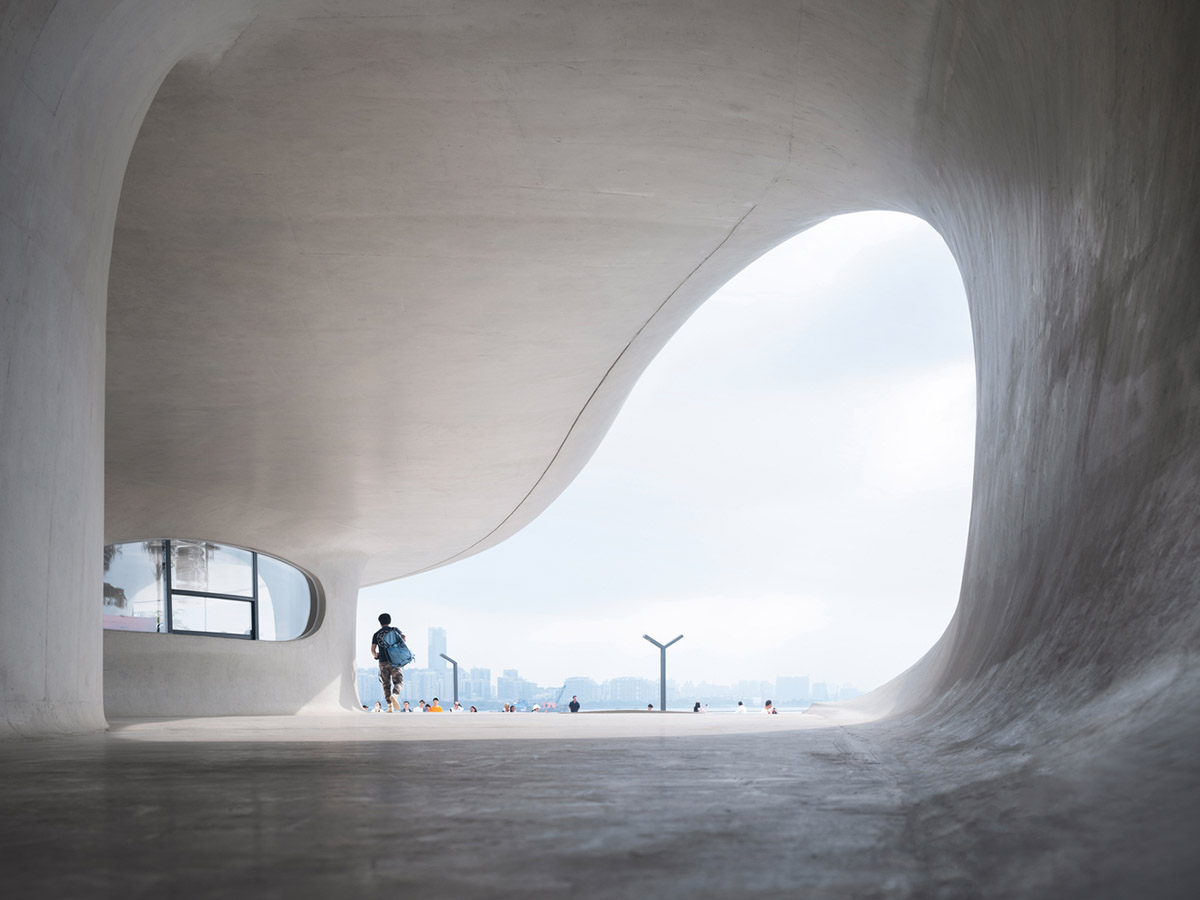
Image © Arch-Exist
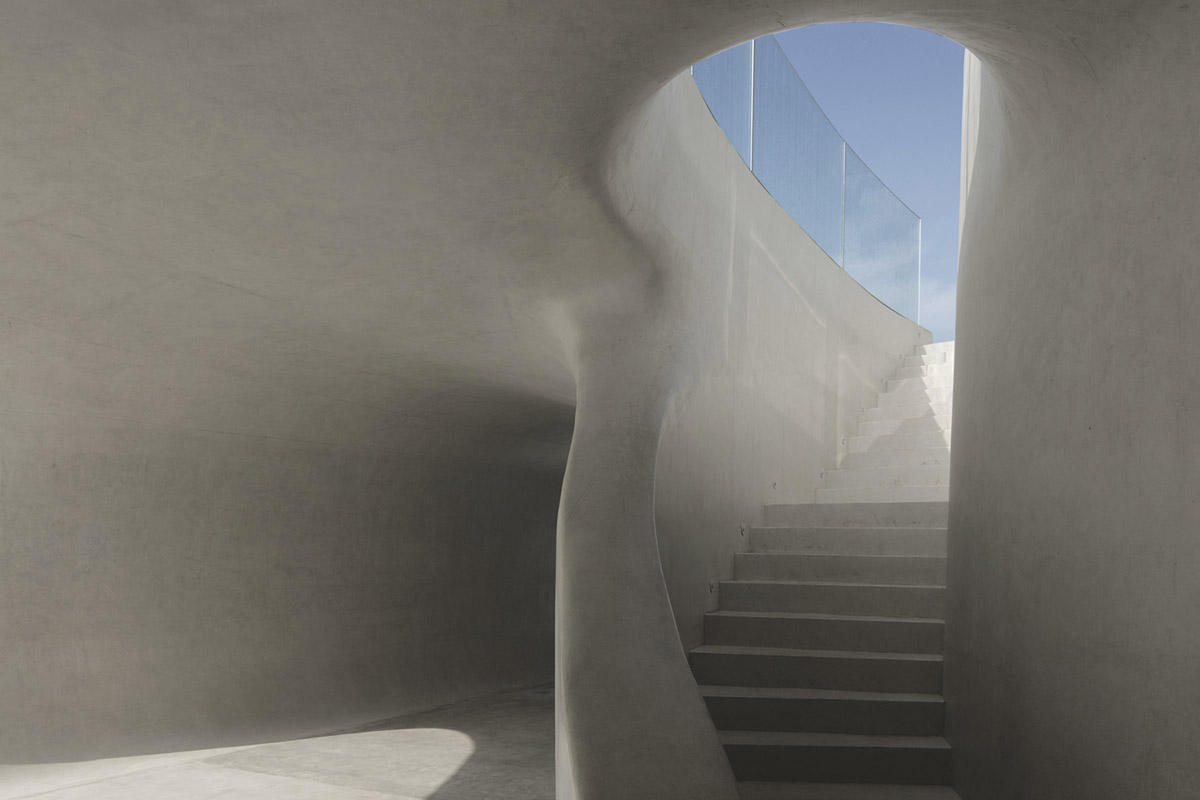
Image © Arch-Exist
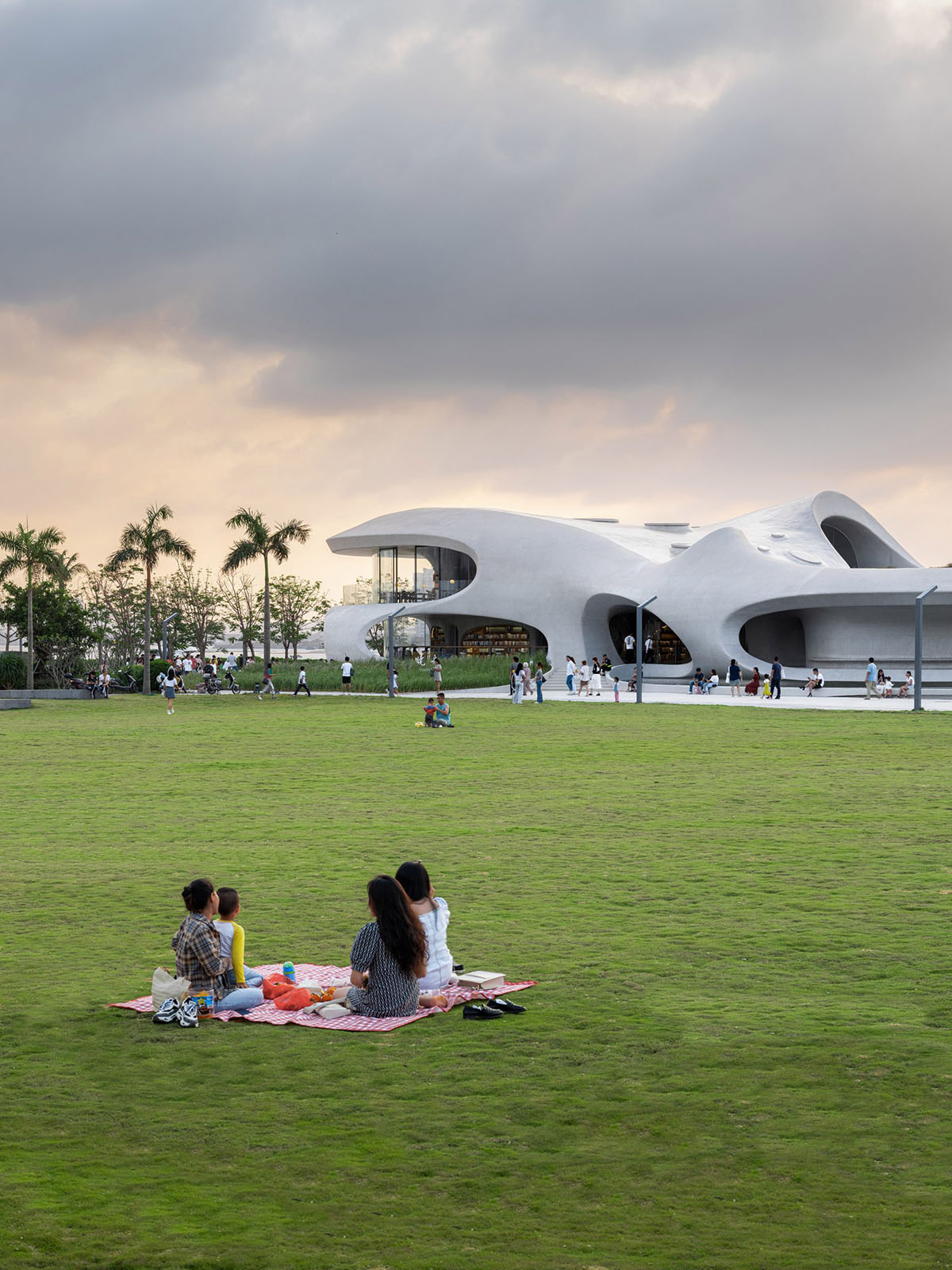
Image © CreatAR Images
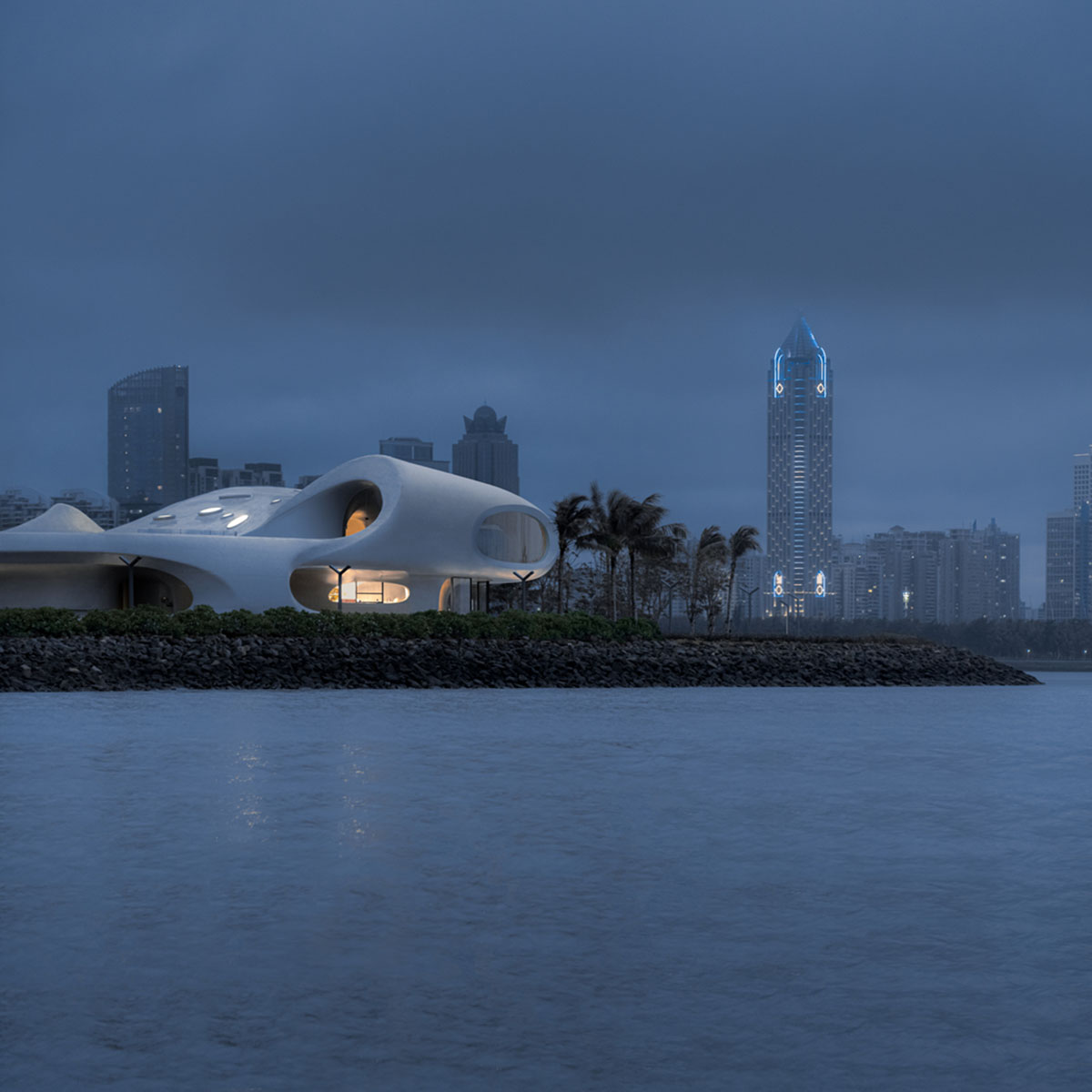
Image © CreatAR Images

Floor plan

Floor plan
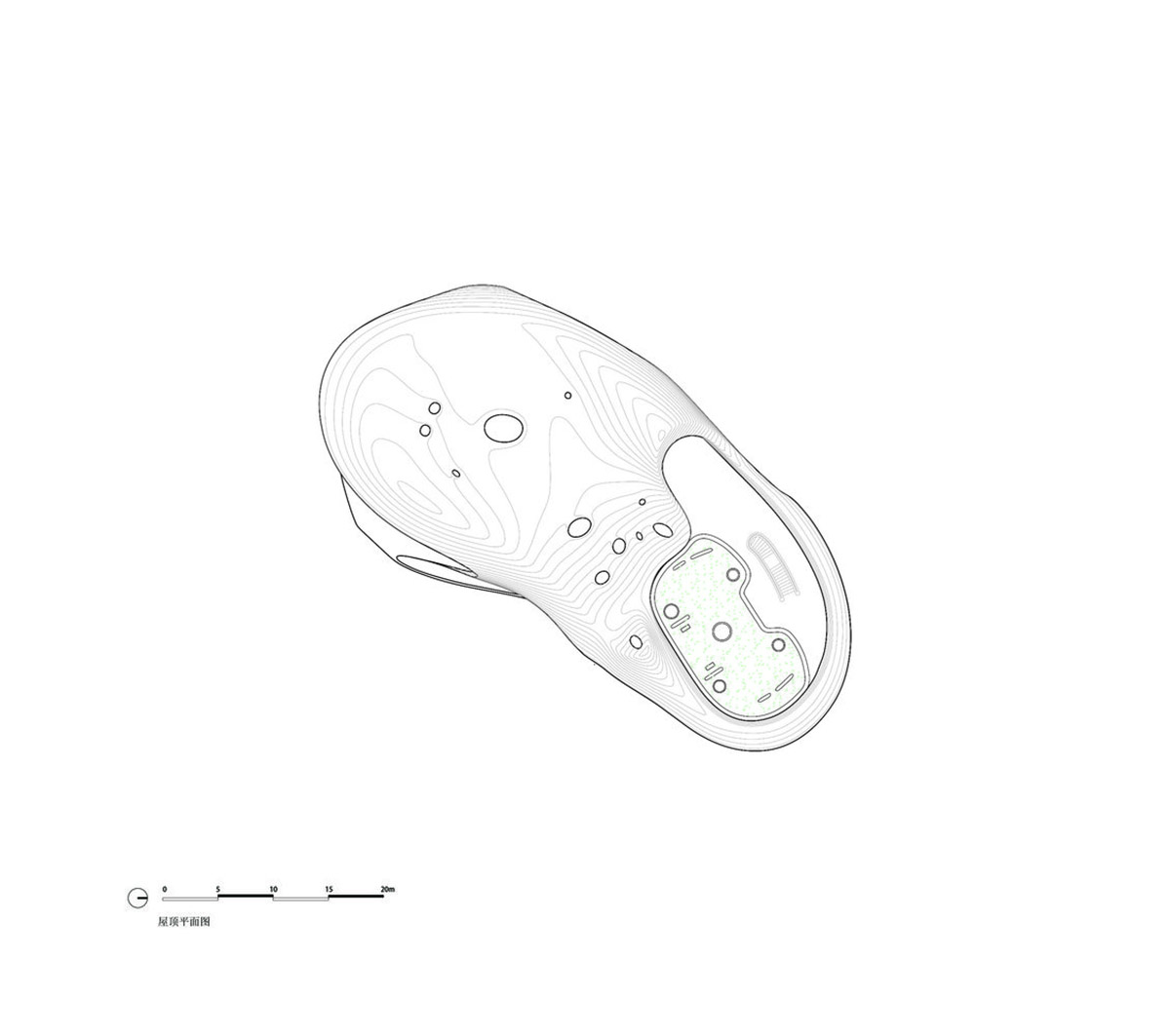
Floor plan

Sections
The Cloudscape of Haikou was completed as the first structure of 16 pavilions developed as part of the Seaside Haikou development. Other structures by architects and artists include works of Thomas Heatherwick, Anish Kapoor, MVRDV, Sou Fujimoto, Kengo Kuma, Bjarke Ingels, Stefano Boeri, Zaha Hadid Architects.
The Cloudscape of Haikou was listed in WAC's 10 hotly-anticipated buildings set to be completed in 2021. The list also includes MAD's Quzhou Sports Campus, in Quzhou, China (expected to be completed for the first phase in 2021).
Top image © Arch-Exist
> via MAD